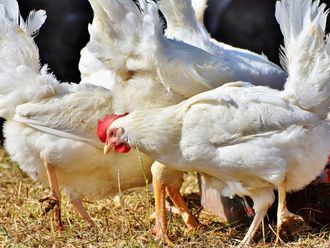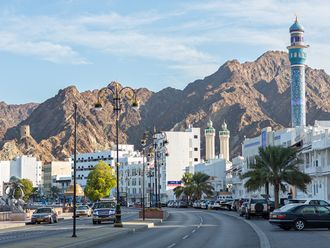
New Delhi: More than one-eighth of humanity will have the opportunity to vote in April and May as general elections begin on Thursday in India. Those voters will speak 22 official languages and thousands of dialects. They will vote from the shadow of the Himalayas right down to the Andaman and Nicobar archipelago.
Indian law mandates that no voter be forced to travel more than 2km to their nearest polling station — in the world’s seventh largest country by landmass. Faced with this logistical challenge, India’s Election Commission holds votes in phases over the course of a few weeks, with results due on 23 May.
800000
polling stations for India’s 900m voters, 3 times the US populationThat allows its 11 million poll workers and security officers to administer the more than 800,000 polling stations that are required. Most importantly, it allows every voting booth to be secured by federal security forces — who are considered harder to influence or intimidate than local police. These caravans of workers and election machinery shuttle across the country by vehicle, helicopter, camel, elephant, bullock cart and boat. The total cost of the election in 2014 was $5 billion (Dh18.36 billion).
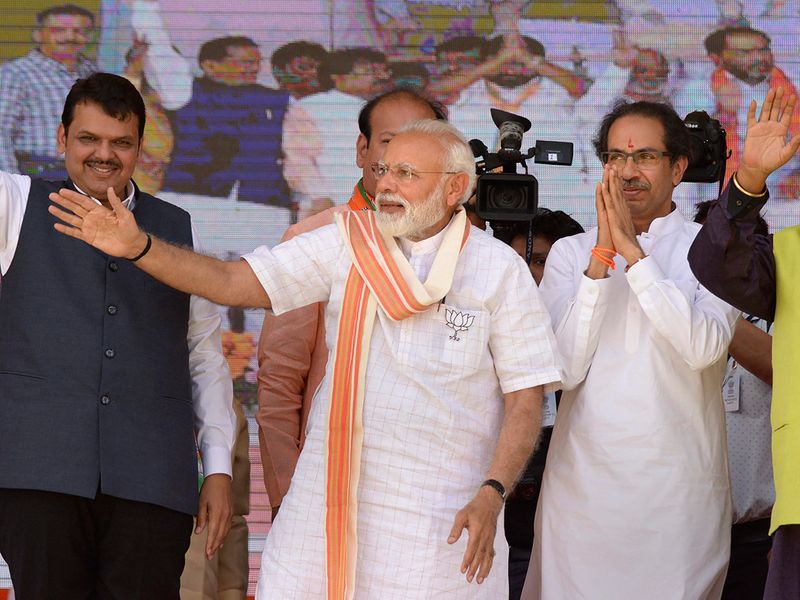
Who gets to vote — and who doesn’t?
Every Indian citizen over 18 is eligible to vote, provided they are not in prison, have not been declared “mentally unsound” or been convicted of electoral crimes such as bribery. The electoral roll this year includes 900 million people — about three times the population of the US. More than 84 million of them will be first-time voters, making the aspirations of young India a key election issue.
The Election Commission touts its commitment to ensuring everyone gets to vote. In a district in Kerala, just a single man was registered to vote. Officials tried to persuade him to travel to a nearby booth. He refused, and so in the 2004 polls, a team of six people established a voting booth for him alone.
How are elections held?
India is the world’s largest democracy with the Constitution of the country providing rights to the people to elect their political representatives and appoint them to handle administrative decisions as the members of the government bodies.
All Indian citizens participate in three types of elections — the general elections, the state government elections, and local elections held for respective ‘gram panchayat’ (village administrative body) through which people elect their local level leaders.
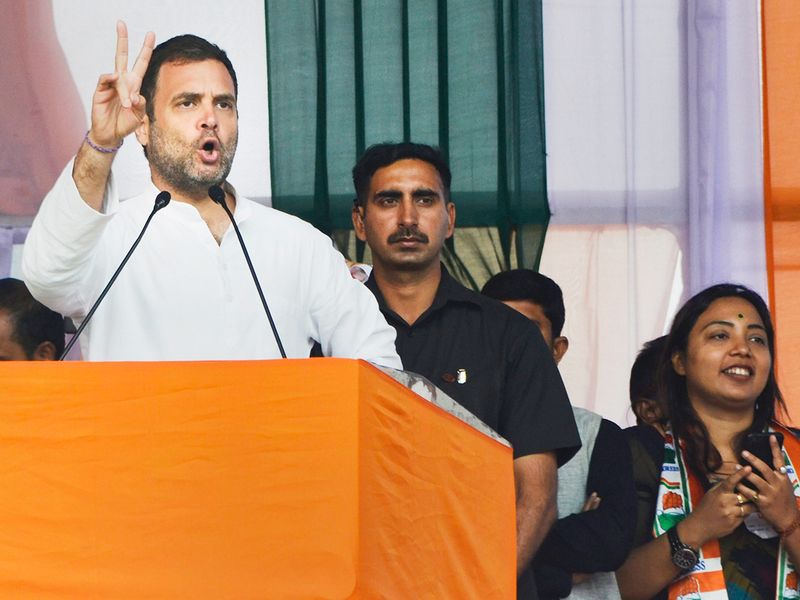
The general elections are held to elect members for Lok Sabha (Lower House of Parliament), which includes Prime Minister (PM) and his cabinet of ministers. These elected members are popularly known as Members of Parliament (MPs). The general election is held every five years.
For general or national elections, the country is split into different constituencies, and the winner is elected from each constituency. As per Article 324 of the Constitution, the power of superintendence, direction and control of the conduct of elections is vested with the Election Commission of India (ECI).
The Members of Lok Sabha are elected directly by voting, from a set of candidates who stand in their respective constituencies. Every adult citizen of the country can vote through Electronic Voting Machine (EVM) only in their constituency.
The winning candidates hold their seats for five years or until the body is dissolved by the President on the advice of the council of ministers. This process is meant to elect a total of 543 Lok Sabha MPs.
In order to stake claim to form the national government, a political party needs as many as 272 MPs. If a party doesn’t have 272 MPs of its own, it can ally with other political parties. The leader of the party/alliance takes oath as the PM.
Is it first past the post or proportional representation?
The voting system for India’s lower house is first past the post (FPTP), meaning whoever gets the most votes in a particular seat is declared the winner, even if their share is well short of 50 per cent.
Critics of the system say it leads to discrepancies between a party’s vote share and the number of seats it wins in parliament. In the last election, for example, the Bharatiya Janata Party (BJP) won 31 per cent of national votes and captured 282 seats — 114 more seats than it would have won under a proportional representation (PR) system, where seats are allocated based on a party’s share of votes.
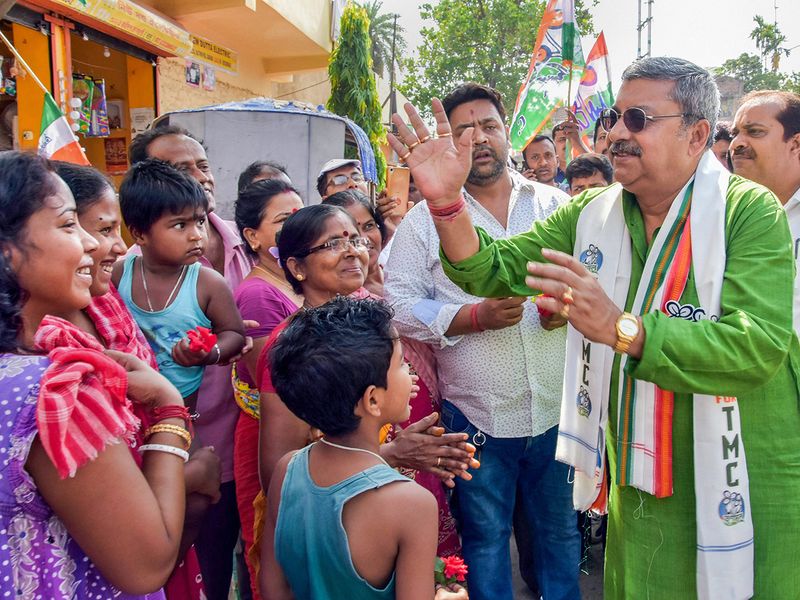
Its main opponent, the Congress party, won 19 per cents of the national vote but just 44 seats — 61 fewer than it would have won under PR. Turnout is normally around 60 per cent, but in 2014 a record high 66.4 per cent cast ballots, reflecting the momentum kicked up by prime minister Narendra Modi and his BJP.
What is the role of the Election Commission?
The Election Commission of India (ECI) is a statutory body responsible for administering elections in the country according to the rules and regulations mentioned in the Constitution. Established on January 25, 1950 with an aim to define and control the process for elections, ECI ensures smooth and successful functioning of the world’s largest democracy. It is considered the custodian of free and fair elections.
ECI conducts polls at various levels: Parliament, state legislatures, and the offices of the President and Vice President of India.
The most crucial challenge before the Commission is to implement electoral norms and the Model Code of Conduct. It has been empowered to oversee political parties and candidates and take appropriate action in case of violations of electoral practices and Model Code of Conduct.
ECI gives recognition to national, state and regional political parties. It allots symbols to them and sets limits on poll expenses. The Commission prepares electoral rolls and updates the voter’s list from time to time. It also issues crucial notifications pertaining to dates and schedules of elections. Interested candidates can then file nominations as per the election schedule set by the Commission.
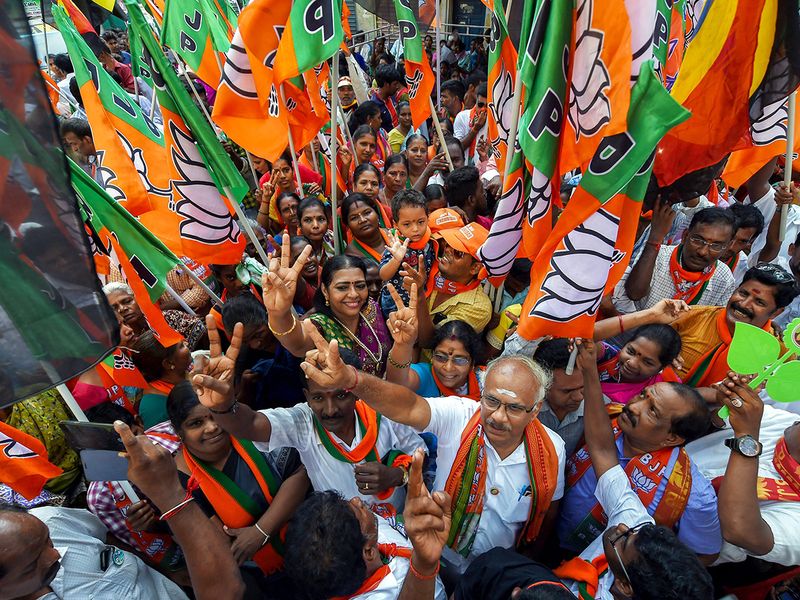
In order to prevent influencing the voting trends in the electorate, ECI can issue an order for prohibition of publication and disseminating of results of opinion polls or exit polls.
ECI takes details of the candidate’s assets on affidavit at the time of submitting nomination paper. The candidates are also required to supply to ECI details of their expenditure within 30 days of the declaration of results.
How does it all happen? What are EVMs?
People cast their ballots using a briefcase-sized, battery-powered electronic voting machine (EVM). It provides the voter with a button for each choice which is connected by a cable to an electronic ballot box. Part of elections in India since 1999, EVMs were adopted across all polls from 2004.
In simplified terms, an EVM is a single unit machine which works on batteries without any network connectivity. It is made up of two units — one is the control unit and the other is the balloting unit.
The control unit of an EVM is under the supervision of the polling officer and the balloting unit is placed inside the voting compartment. The balloting unit presents the voter with blue buttons horizontally labelled with corresponding party symbol and candidate names.
The control unit, on the other hand, provides the officer in-charge with a “Ballot” marked button to proceed to the next voter, instead of issuing a ballot paper to them. This activates the ballot unit for a single vote from the next voter in queue.
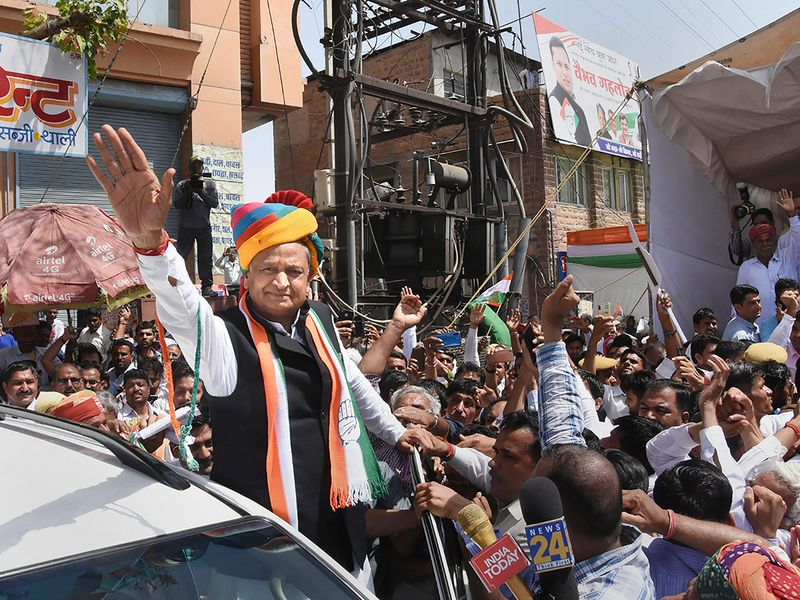
The voter has to cast his vote by pressing the blue button once on the balloting unit against the candidate and symbol of his choice. As soon as the last voter has voted, the polling officer will press the ‘Close’ Button.
The machine can record 64 different candidates at one point of time. The maximum number of votes that can be recorded in one machine is 3,840.
After voting, each person’s finger is marked with indelible ink, preventing them from voting twice.
Who makes indelible ink?
In order to eliminate fake voting, the Election Commission (EC) introduced the use of indelible ink which, once applied, stays for about 20 days and cannot be removed by any chemical, detergent or oil. The ink is put on the left hand fingernail of the voter to denote he has exercised his franchise.
There is only one company — Mysore-based government-run Mysore Paints and Varnish Limited (MPVL) — which makes indelible ink used in elections in India.
Reckoned to be the largest manufacturer of ink in Asia, the factory was established in 1937 by Nalwudi Krishnaraja Wadiyar. Then known as Mysore Lac and Paint Works Limited, the company was identified to manufacture indelible voters ink for the third general election in 1962. It has been a monopoly ever since.
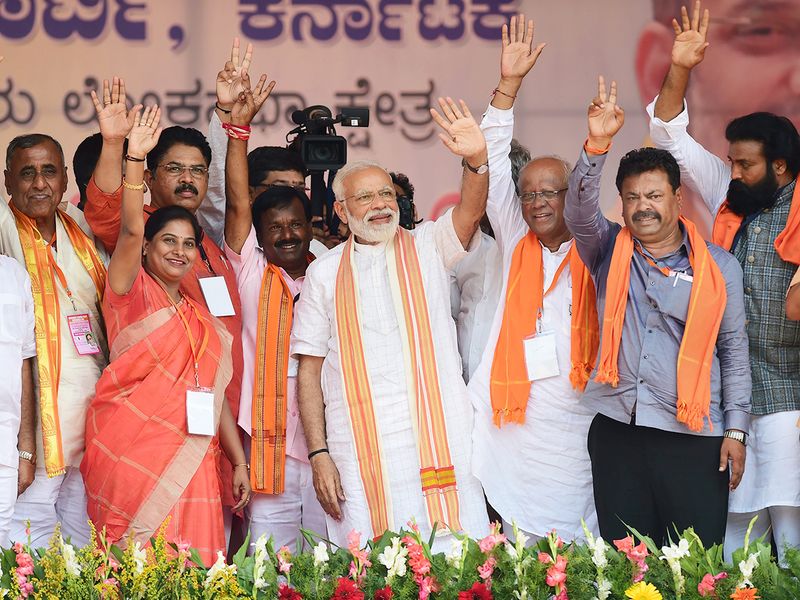
Specialising in manufacturing indelible ink, MPVL has been supplying this for the Parliamentary, legislative assembly and local body elections in India since 1962. The company also manufactures other products such as chemical-resistant paints, enamels, primers, distempers, sealing wax, postage stamp cancellation and polishes.
While maximum demand of about 300,000 vials comes from Uttar Pradesh (UP), the least number of vials is from Andaman and Nicobar Islands which need less than 1,000 of them.
There are different vials — 5ml ink in 10ml bottle, 7.5ml in 10ml bottle, 20ml in 30ml bottle, 50ml in 60ml bottle and 80ml in 100ml bottle. Each vial or bottle of ink containing about 5ml of the indelible ink can be applied on nearly 300 voters.
Apart from supplying indelible ink to Indian elections, MPVL has been exporting the ink to 35 countries across the world including Turkey, South Africa, Nigeria, Nepal, Ghana, Papua New Guinea, Burkina Faso, Canada, Togo, Sierra Leone, Malaysia and Cambodia.
When do we get the results?
Counting day is 23 May. Each district will begin counting ballots around 8am. In case of a clear result, as in 2014, we are likely to know the shape of the new government by noon. Counting in closer booths may extend to the evening. If no party claims a majority, we may see days of squabbling to form a governing coalition.
The process of building coalitions can be messy.
What’s at stake this time around?
Modi and his supporters would say that India is finding its feet as a world power. It has a leader who has used his big majority to cement some important and long-delayed reforms, such as a goods and services tax, the world’s largest free medical scheme for the poor and a national bankruptcy law.
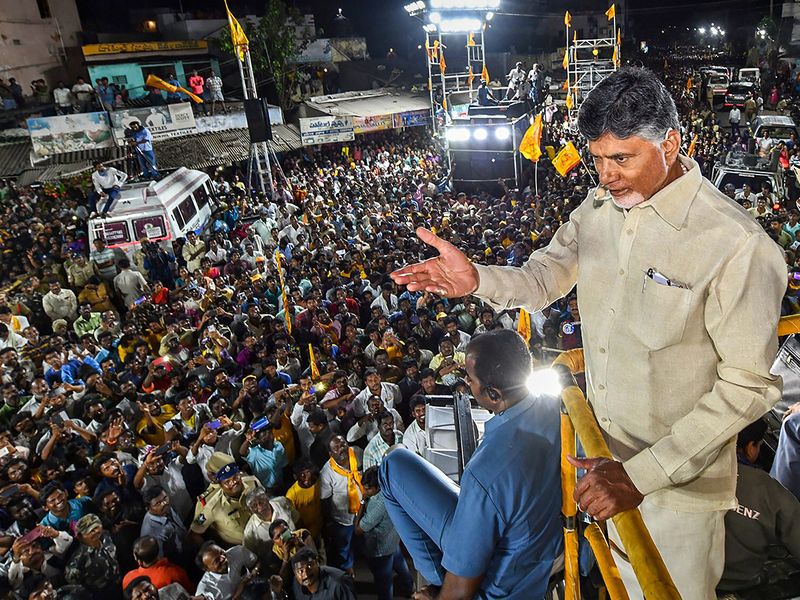
Modi supporters say he needs another term to implement land reform, bring in a national social security scheme and continue rolling out Aadhaar, the world’s largest biometric identity database.
His opponents, including the Congress party president Rahul Gandhi, say Modi has spent five years undermining the country’s free institutions: meddling in the Supreme Court, intimidating the media, undermining the Reserve Bank of India and encouraging police to look the other way as minorities are targeted. They say he has failed to create jobs, is ruining India’s reputation as a tolerant country, and is running a “billionaire Raj”, favouring some of the country’s wealthiest corporate titans over the poor.
What does the data show?
India’s political scene is extraordinarily complicated, with thousands of candidates and hundreds of parties jostling to forge alliances that cut across caste, religious and linguistic divisions. Even pollsters struggle to comprehend it, and few have been able to accurately predict the result of the last three national elections.
In December, Modi’s BJP lost three state elections in a single day. Echoing that downturn, most polls in the first two months of this year showed the BJP shedding seats and failing to win a majority of parliament, though it was still in the largest party in the house. But since Indian jets crossed into and bombed Pakistan last month, in the worst clashes between the neighbours in decades, Modi’s support appears to have rallied. Three polls so far in March have shown him winning a narrow majority, though the wisest observers treat the opinion data with scepticism.
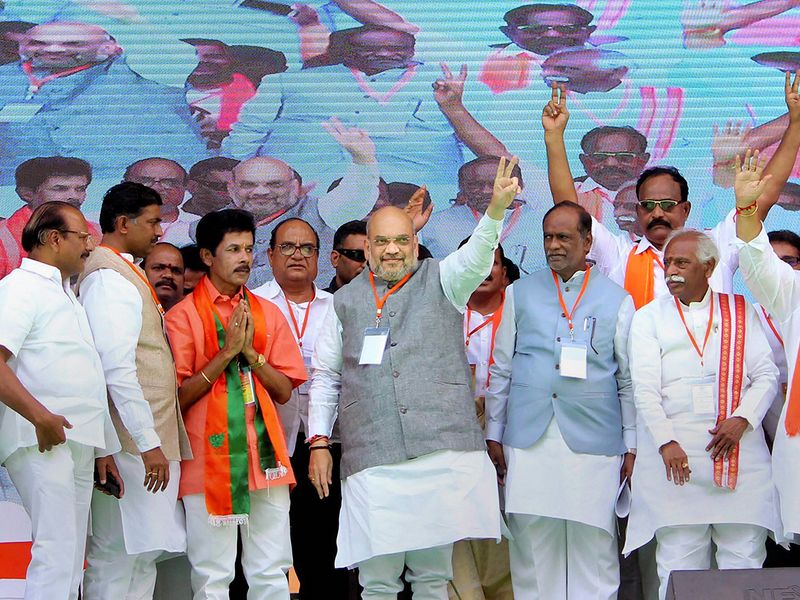
What are the big issues?
The issues that matter to India’s 1.3 billion citizens can vary from district to district. Campaigns are finely tuned to appeal to particular constituency. In one notable example, members of the BJP were arguing they would try to curtail the slaughter of cows in a majority Hindu region of the country, while arguing they would improve the quality of beef in a majority Christian one.But there are some broad national issues:
Farming
Indian farmers are ailing. Years of droughts and crop failures have wrecked their businesses. The government has favoured policies that keep food prices low to benefit the country’s urban masses — but that’s bad news for those who actually grow the food. Tens of thousands of farmers have marched on Delhi regularly in the past three years to make their unhappiness known. The Modi government has sought to win them over with a series of cash handouts, but it is unclear whether it will be enough to win back a constituency of farmers and farm workers who make up nearly half the country.
Jobs
Modi stormed to power in 2014 in part on promises to create millions of jobs. Many young Indians, hungry for work and frustrated by corruption, enthusiastically backed him to get the country’s economy moving. In January, the Business Standard newspaper obtained a jobs survey the government had had for weeks but refused to release. It revealed that India’s unemployment rate had grown to 6.1 per cent, the highest rate in 45 years.
Security
India and Pakistan’s recent tit-for-tat air strikes have put national security high on the election agenda. Modi has fashioned himself as the nation’s chowkidar (security guard), even changing his Twitter handle to add the title.

Will ‘fake news’ be a big issue?
India’s online population is now 500m people — more than double what it was in 2014, according to the Internet and Mobile Association of India. The big political parties have built up networks of tens of thousands of online activists who help to push their messages out over Facebook, WhatsApp and newer apps such as the short-video service TikTok.
India’s election authorities have drawn up an agreement with major social media companies to try to take down fraudulent information as quickly as possible. The apps themselves are trying to partner with media companies to fact-check information, and are warning their users not to believe everything they read.
What are the perks of an MP?
Each Parliamentarian elected in the general election for Lok Sabha (Lower House of Parliament) gets a monthly salary of Rs50,000 (Dh2,650) during the whole term of office.
For the purpose of income tax, the salary and allowances received by the Member of Parliament (MP) are taxed under the head “income from other sources” and consequently, no income tax is deducted at source.
34
free single air journeys given to an parliamentarianNot just that, the MP also gets a number of other allowances every month like medical, housing, telephone facilities etc.
If an MP signs the Parliament register every day during the session, he gets an additional allowance of Rs2,000 per day. He also gets Rs45,000 per month for development work in his constituency.
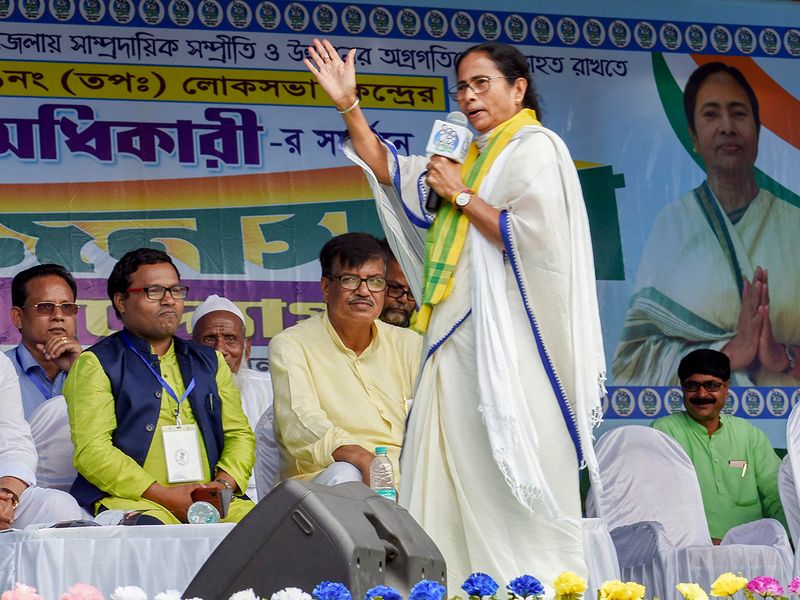
He gets Rs45,000 per month to meet monthly meeting expenses; out of which Rs15,000 is meant for stationery and postage, and Rs30,000 is allocated towards the payment of the member engaged for secretarial assistance to the MP.
An MP is also entitled to travel allowances when he is travelling for official duty. He can avail 34 free single air journeys during a year with spouse or any number of companions or relatives. The spouse/companion can travel alone eight times in a year to meet the MP.
As regards travel by rail, an MP can travel at any time by any railway in India in first class air-conditioned (AC) or executive class. The MP is also entitled to be accompanied by one person while travelling by rail.
The MP’s spouse is entitled to travel with him in first class AC or executive class in all the trains, from and to any place in India. A member having no spouse is entitled to accompany with any other person in lieu of spouse. If the MP chooses to travel by road, he is entitled to Rs16 per kilometre.
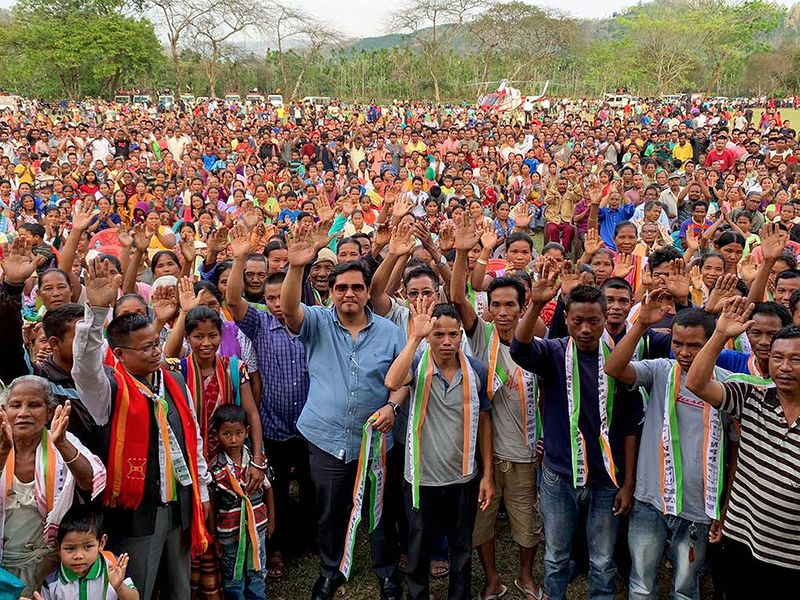
He is also entitled to a rent-free flat or hostel accommodation during his term of office. Besides, he can avail three telephone connections with 50,000 free local calls from each phone in a year which is collectively 1,50,000 free local calls in a year.
He can avail two mobile phone connections of which one has to be on the network of public sector Mahanagar Telephone Nigam Limited (MTNL)/Bharat Sanchar Nigam Limited (BSNL).
He gets same medical facilities as are available to the Class-I officers of central Civil Services, under Central Government Health Scheme (CGHS), which effectively means free of cost.
He also gets 4,000 kilolitre of water and 50,000 units of electricity free of cost per month at his residence in Delhi. After retirement, he gets minimum pension of Rs20,000 per month. If the MP has served for more than five years, he gets additional pension of Rs1,500 per month for every additional year.




